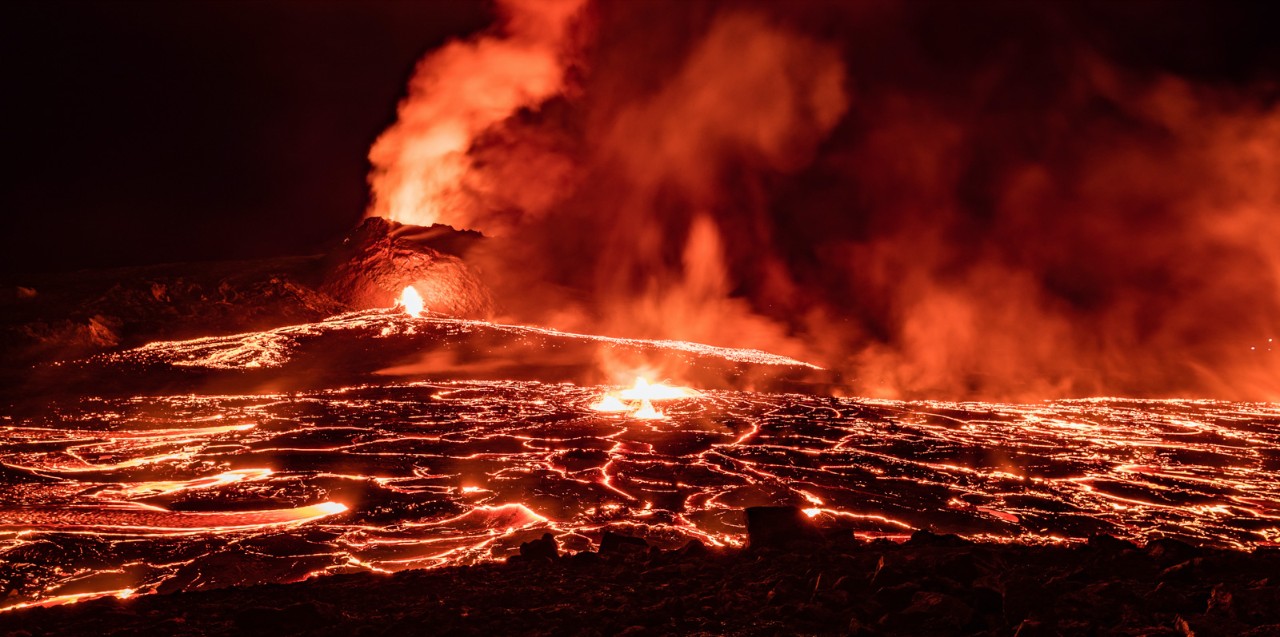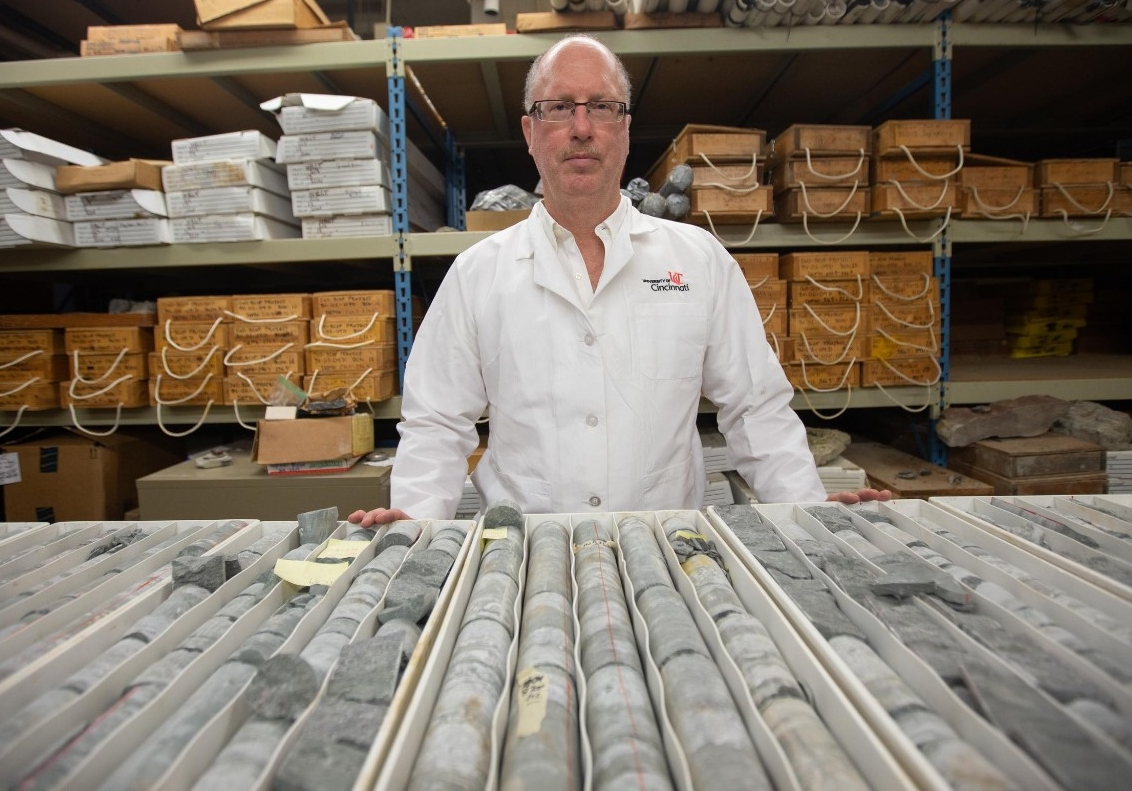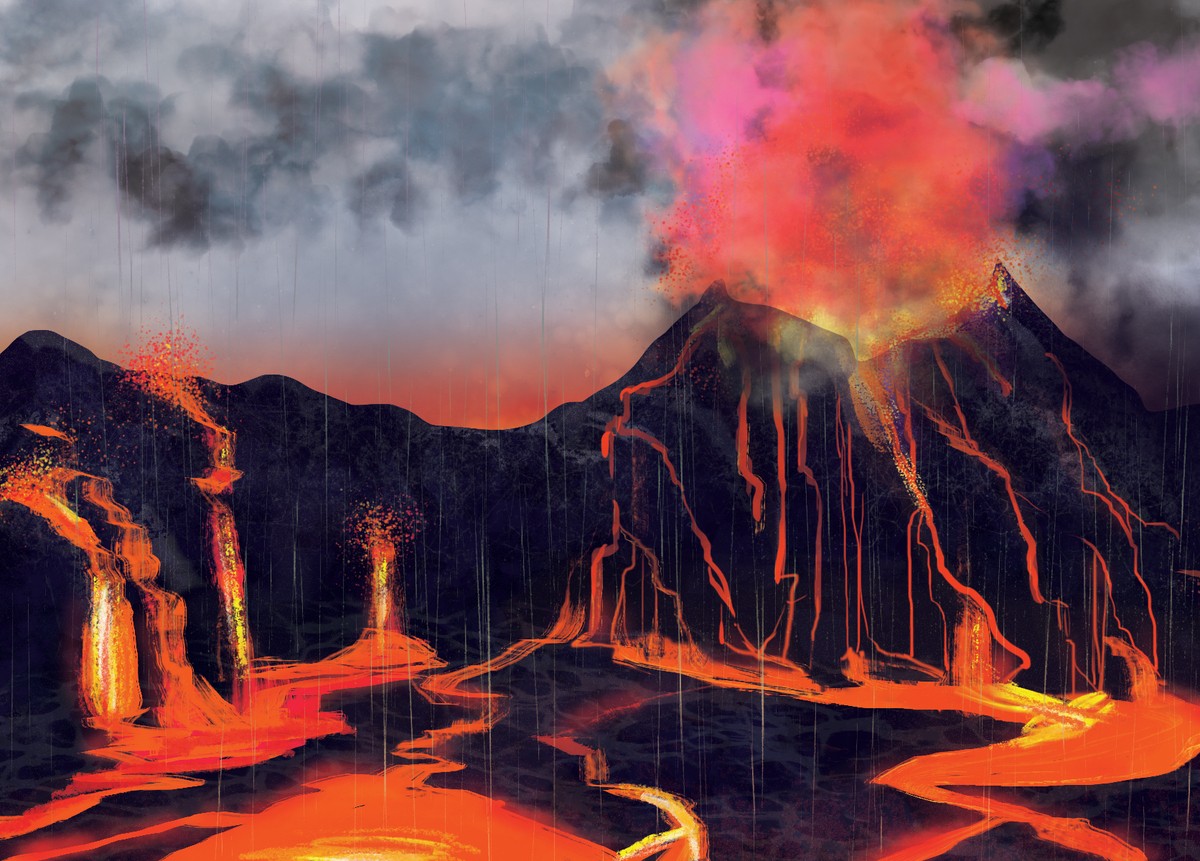
Researchers find evidence of twin mass extinctions
Volcanic eruptions millions of years apart wiped out much of life on Earth
Long before dinosaurs, Earth was dominated by animals that were in many ways even more incredible.
Carnivores such as Titanophoneus, or “titanic murderer,” stalked enormous armored reptiles the size of buffalo.
Many of these animals died out in a mass extinction during the Capitanian Age approximately 260 million years ago.
Now an international team of researchers says evidence suggests this mass extinction was not a single event but two, separated by nearly 3 million years. Both were caused by the same culprit: massive volcanic eruptions.
By studying uranium isotope profiles of marine samples collected in the South China Sea, scientists identified two “pulses” in which the oceans became deprived of life-giving oxygen.
In a study published in the journal Earth and Planetary Science Letters, researchers say their analysis provides evidence that the oxygen-deprived oceans precipitated two mass extinctions around 259 million and 262 million years ago during the Middle Permian Period.

University of Cincinnati Professor Thomas Algeo stands at a table covered in rock cores in his geosciences lab. Photo/Andrew Higley/UC Marketing + Brand
Looming climate disaster
By studying these ancient extinctions, researchers can better predict how modern-day global warming could affect the ocean’s food chain.
“We are studying the biocrisis in the Permian Period, but similar warming is happening today because of human events,” said Thomas Algeo, a study co-author and University of Cincinnati professor of geosciences. “Humans are mimicking the effects of volcanic eruptions as a consequence of the release of carbon into the atmosphere.”
The study was led by researcher Huyue Song at the China University of Geosciences, a former postdoctoral researcher at UC.
“Today, we are facing several global change issues, including global warming, ocean hypoxia, seawater acidification and biodiversity decline, which are similar to the environmental changes during the Middle Permian biological crisis interval,” Song said.

UC College of Arts and Sciences Professor Thomas Algeo examines a rock core in a spectral core gamma logger. Photo/Andrew Higley/UC Marketing + Brand
Scientists have identified the five biggest mass extinctions, including the most cataclysmic of all 252 million years ago called “the great dying” that wiped out 90% of ocean life and 70% of land animals. This disaster, too, was caused by massive volcanic activity that turned the seas into dead zones, said Algeo.
“The Capitanian extinctions are not among the Big Five, but they are significant,” Algeo said.
How do volcanic eruptions lead to extinctions?
Algeo said massive eruptions create a brief period of cooling from ash in the upper atmosphere reflecting sunlight, followed by much longer periods of global warming. The release of massive volumes of greenhouse gases warmed the oceans. The warm surface water did not allow dissolved oxygen to reach lower depths, eventually destroying the food chain.
“The ocean is teetering on the edge of anoxia,” he said of this absence of oxygen. “Dissolved oxygen has to be taken up by the surface layer and supplied to the deep ocean. But warmer water is lower density. When you increase the density differential, you prevent any overturn and there’s no way to get dissolved oxygen into the deeper layers.”

An international team of researchers discovered evidence that a mass extinction 260 million years ago was actually two events separated by 3 million years. Scientists say both likely were caused by volcanic eruptions. Illustration/Margaret Weiner/UC Marketing + Brand
One way researchers identify these massive volcanic eruptions is by looking for mercury in the sedimentary layers.
“Mercury has been shown to be a useful proxy for volcanic eruptions,” Algeo said. “Large volcanic eruptions spew mercury into the atmosphere that gets carried around Earth and deposited in marine sediments.”
Scientists say the volcanic eruptions that caused the great dying originated in Siberia. The eruptions that caused the twin mass extinctions in the Permian took place in southwest China in a place known as the Emeishan Large Igneous Province.
Over the last 40 years we’ve made tremendous strides in understanding the Earth’s past.
Thomas Algeo, UC College of Arts and Sciences
Algeo said he would like to see if any terrestrial evidence supports the conclusions derived from their study of ancient oceans. He is optimistic that geology will unlock more mysteries about prehistoric life on Earth.
“Over the last 40 years we’ve made tremendous strides in understanding the Earth’s past,” Algeo said. “It’s partly because we have all these new tools we can apply. And we have many more people working in this field than we had a generation ago.”
Researcher Song said the dual disasters in the Permian show the devastating effects that global warming can have.
“We must pay attention to these environmental issues and prevent the sixth mass extinction,” he said.
Featured image at top: University of Cincinnati Professor Thomas Algeo and his research partners found that a mass extinction 260 million years ago was actually two events separated by 3 million years. Both are believed to be caused by volcanic eruptions. Photo/Johan Sjolander/iStockPhoto

University of Cincinnati Geosciences Professor Thomas Algeo uses the latest scientific tools to study climate, ancient life and environmental change millions of years ago. Photo/Andrew Higley/UC Marketing + Brand
Impact Lives Here
The University of Cincinnati is leading public urban universities into a new era of innovation and impact. Our faculty, staff and students are saving lives, changing outcomes and bending the future in our city's direction. Next Lives Here.
Related Stories
Mastodon: But I would walk 500 miles...
June 13, 2022
Using isotopic analysis of its tusks, researchers tracked the ever-increasing seasonal migrations of a male mastodon across what is now Indiana, Ohio and Illinois more than 13,000 years ago. It's the first study of its kind to examine the seasonal movements of the largest extinct Ice Age animals.
How to spot a fake
December 6, 2022
University of Cincinnati chemists, geologists and art historians are collaborating to help area art museums answer questions about masterpieces and detect fakes — and teaching students about their methods.
UC finds mammoth problem with extinction timeline
November 30, 2022
UC paleontologist Joshua Miller disputes timeline that uses environmental DNA to suggest mammoths died out more recently than we knew.
